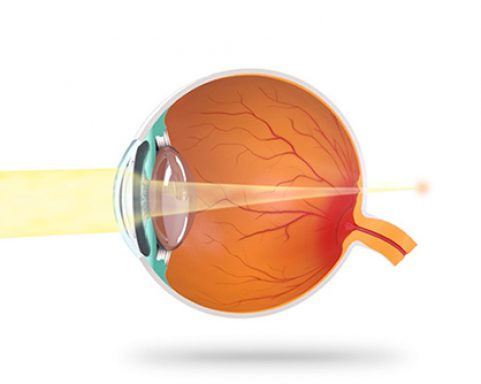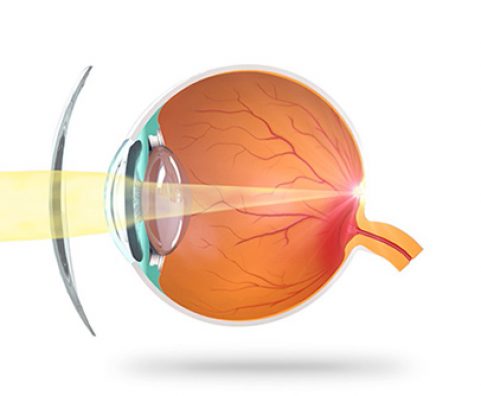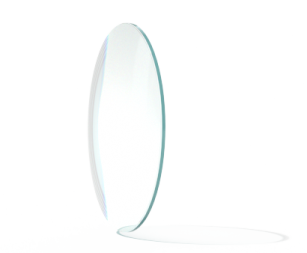Presbyopia
Once pictured
PRESBYOPIA
Presbyopia affects approximately 49% of the European population today. A decrease in lens elasticity can be identified among adults around the age of 40. These age-related changes to the lens are a part of the eye’s natural ageing process, which progresses until the age of around 60 before stabilizing. People with presbyopia have blurry vision in the near and sharp vision in the distance.

Presbyopia: Definition
Presbyopia is characterized by a decline in the eye’s ability to accommodate. Accommodation at the age of ten is 14.00 dpt, but drops to 10.00 dpt at 20 years, 6.00 dpt at 36 years and 4.00 dpt at 40 years of age, before ultimately reaching 0.00 dpt at the age of 60.
Because the image of a near object appears behind the retina, vision is blurry in the near and sharp in the distance.
Presbyopia: Causes and symptoms
Due to an age-related decline in the eye’s lens elasticity, the lens is less able to adjust to objects in the near. This lack of ability of the lens to adjust its curvature to the source of light prevents sufficient accommodation and beams of light cannot converge on the retina. The older the person with presbyopia is, the farther they have to hold their newspaper or book away from their eyes in order to compensate for diminishing accommodation.


Correcting presbyopia
Presbyopia itself can be corrected with convex single vision lenses, which focus beams of light directly on the retina and thus generate a sharp image. It’s also recommended that people with presbyopia wear progressive lenses, as they offer a sharp image at all distances. The wearer therefore experiences a natural, precise vision without compromise.
The corresponding lens
A lens tailored to your specific visual impairment
THE MONOVID FREE-FORM SINGLE VISION LENS

A combination of precision and lightness.
THE VARIOVID FREE-FORM PROGRESSIVE LENS

A combination of precision and lightness.
THE DIGIVID OCCUPATIONAL FREE-FORM SINGLE VISION LENS

A combination of precision and lightness.
